
Search Graph Algorithm
The Search Graph Algorithm
are the algorithms to traverse through a Graph.These Algorithms systematically
explores each vertex that is reachable from sourse. There are fundamentally
two Search Graph Algorithm,Breadth
First Search and Depth First Search,which
traverse as the name apply.
Breadth
First Search
The algorithm is named
so as traverse through the graph breadth wise i.e. The algorithm discovers
all vertices at distance K from sourse S before discovering any vertices
at distance K+1. It computes the distance from source to all reachable
vertices.
To keep track of progress ,it starts with all white vertices ,whenever
it encounters a vertex it colors it red and later voilet. Breadth search
search constructs a breadth first tree ,initially containing only its root
,which is the sourse vertex S.whenever a white vertex V is discovered in
the course of scanning the adjacency list of an already discovered vertex
U ,the vertex V and the edge(u,v) to the tree including the vertex U as
parent of V.
The BREADTH FIRST SEARCH assumes that input graph G = (V,E) is represented
as adjacency-list. The Algorithm is as follows.
Algorithm
1.
for each
vertex u belonging to V[G]-{S}
2.
do
color[u] <-- white
3.
d[u] <-- infinity
4.
#[u] <--NIL
5. color[S] <-- red
6. d[S] <-- 0
7. #[S] <--NIL
8. Q <--S
9. while
Q != NULL
10.
do u <-- head[Q]
11.
for each
V belonging to Adj[u]
12.
do if color[V] = white
13.
then
color[v] <--red
14.
d[v] <--d[v] +1
15.
#[v] <-- u
16.
ENQUEUE(Q,v)
17.
DEQUEUE(Q)
18.
color[u] <-- voilet
The procedure of BFS is as
follows . Line 1-4 paint every vertex white,set d[u] to infinity and parent
of each vertex to NULL. Line 5-8 paints the sourse S gray ,initialies d[S]
to 0,and its parent to NULL and add it to Q which contains set of gray
vertices. The for loop of program is contained in Line 9-18.
The loop iterates as long as gray nodes are present ,which are discovered
during search of adjacency lists of vertices,Line 10 determine the gray
vertex u at the head of Q.the for loop of lines 11-16 considers each vertex
V in the adjacency list of u .If V is white ,then it has not been discovered
and the algorithm discoveres it by executing lines 13-16. It is first grayed
and its distance d[V] is set to d[u]+1.Then ,u is recorded as its parent
.Finally it is placed at the tail of Q.when all the vertices of adjacency
list of u are examined ,u is removed from Q and blackened in lines 17-18.
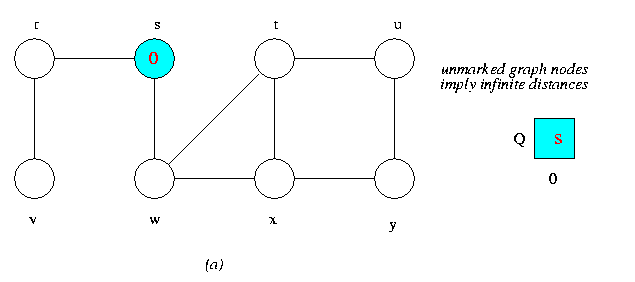
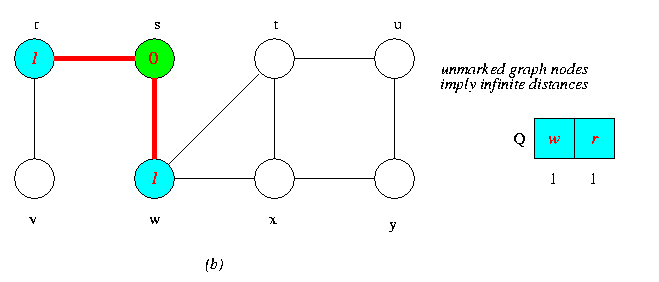
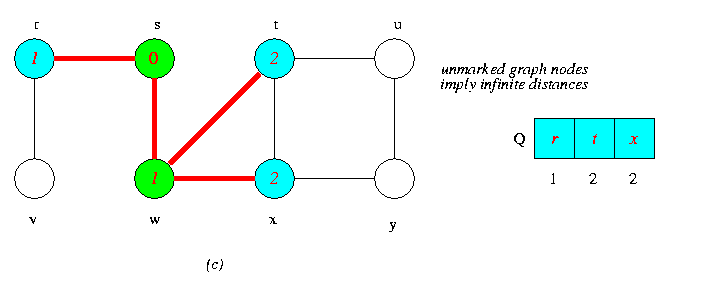
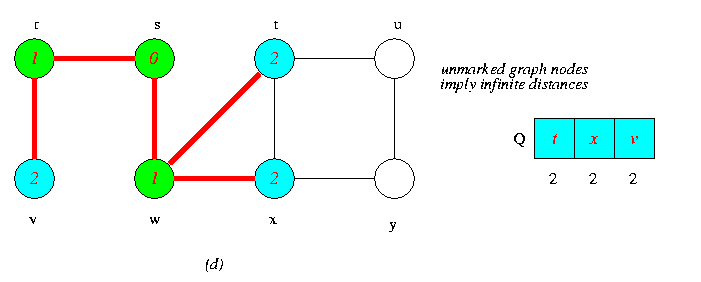

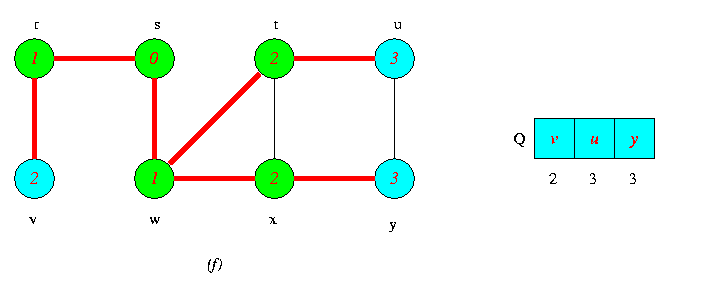
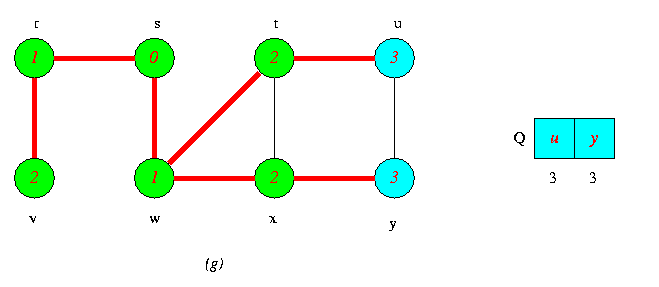
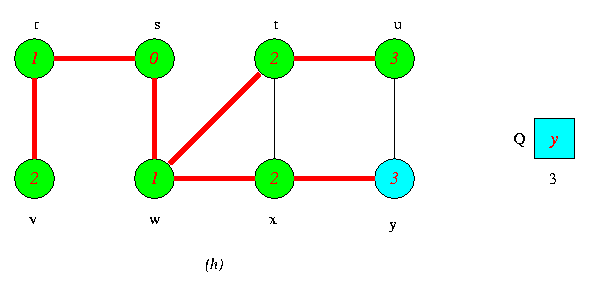
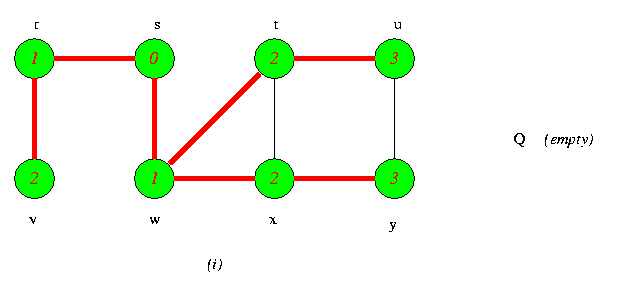
Operations of BFS on an Undirected Graph
Tree edges are shown red as they are produced by BFS. Within each vertex u is shown d[u].The queue Q is shown at the begining of each iteration of the while loop of lines 9-18.Vertex distances are shown next to vertices in the queue.
Run Animation
Depth first search
The startegy followed by DEPTH FIRST SEARCH is, as the name
imply ,to search deeper in the graph whenever possible. In depth
first search ,edges are explored out of the most recently discovered vertex
V that still has unexplored edges leaving it .When all of V's edges has
been explored ,the search "back Tracks" to explores edges leaving the vertex
from which V has been discovered .The process continues until we have discovered
all the vertices reachable from the original source.The entire process
is repeated until all the vertices are discovered.
Algorithm
DFS(G)
1. for each vertex u belonging
to V[G]
2.
do color[u]<--white
3.
parent[u]<--nil
4. time <--0
5. for each vertex u belonging
to V[G]
6.
do if color[u] = white
7.
then DFS-Visit(u)
DFS-visit(u)
1. color[u]<--gray |>
white vertex has just been discovered
2. d[u]<--time<--time+1
3. for each V belonging to
Adj[u] |> Explore edge(u,v)
4.
do if color[V] = white
5.
then parent[V]<--u
6.
DFS-visit(V)
7. color[u]<--black
8. f[u]<--time<--time+1
The procedur DFS works as follows .the Line 1-3 paint all vertices white
and initialize their parent as NIL .Line 4 resets the global time counter
.Lines 5-7 check each vertex in V in turn and when a white vertex
is found,visit it using DFS-visit.Every time DFS-visit(u) is called in
Line 7,vertex u becomes the root of a new tree in Depth First Forest.
in each call DFS-visit(u) vertex u is initially white .Line 1 paints
u gray ,and line 2 records the discovery time d[u] by incrementing and
saving the global variable time.Line 3-6 examines each veretx V adjacent
to U and recursively visit V if it is white . As each vertex V belonging
to Adj[u] is considered in Line 3 ,Finally after every edge leaving the
u has been explored ,Lines 7-8 paints u black and record the finshing time
in f[u].
The total
cost of execution is of order of (V+E).
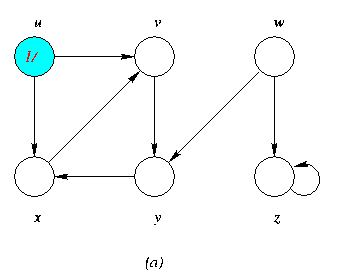
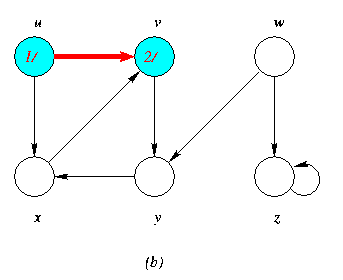
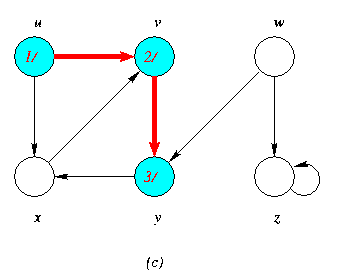
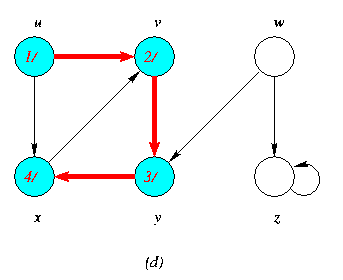
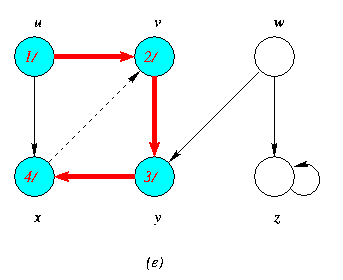
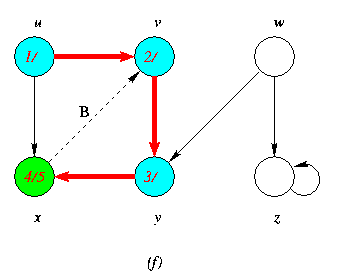
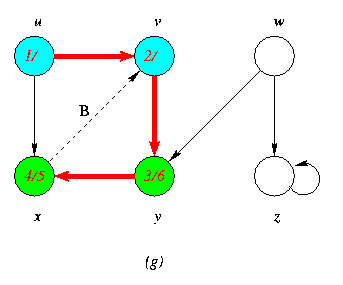
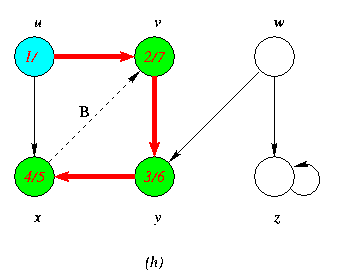
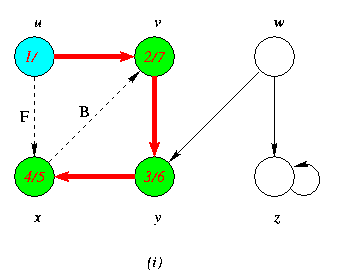
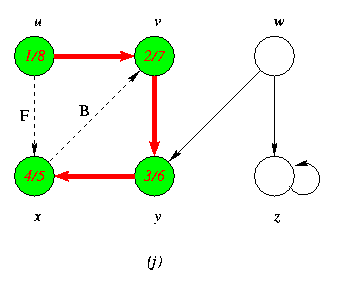
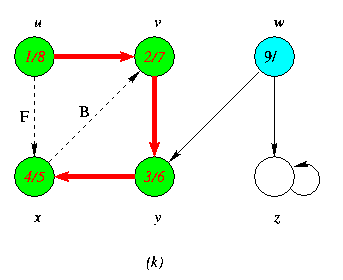
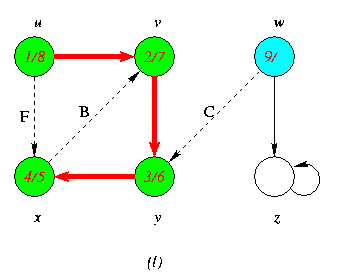
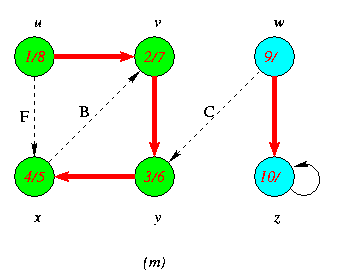
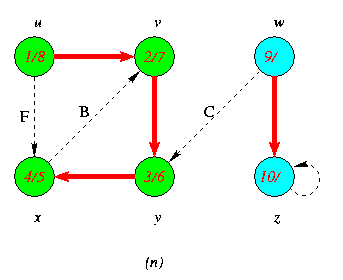
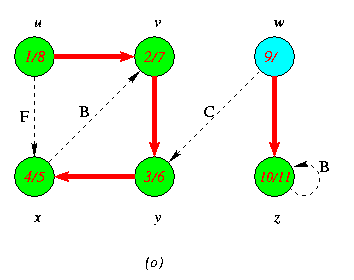
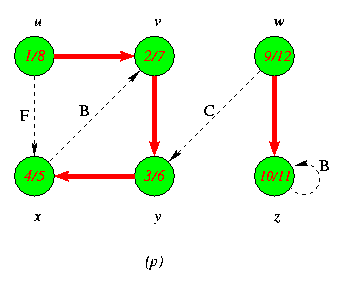
Progress of Depth First Search DFS Algortithm on a directed Graph
As the edges are explored by the algorithm,they are shown as either red (if they are tree edges ) or dashed (otherwise).Nontree edges are lebeled B,C or Fto wether they are back,cross or forward edges.Vertices are timestamped by discovery time/finishing time.
Run Animation


Key to Home
Search Graph Algorithms
This Tutorial was written
by Abhishek Goyal,Marghoob Mohiyuddin,Pooja Nath and Ruchi Saran |
|
Please email comments to:
[email protected]
[email protected] |
-
© Abhishek
Goyal
, 1999



























